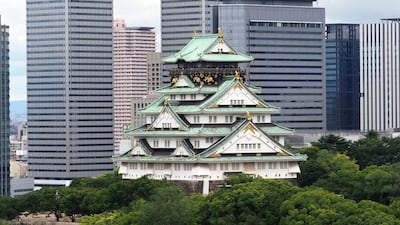In April this year, only 2,900 tourists visited Japan. In April last year, 2,926,685 people visited the country: tourism has experienced a 99.9 per cent year-on-year drop.
So, in an effort to try to restart the industry, officials are considering a plan that would include the Japanese government paying half of tourists' travel expenses.
However, while it was first believed this proposal may include foreign travellers, the Japan Tourism Agency has confirmed the offer was aimed at domestic tourists only.
"The Go to Travel Campaign under consideration by the Japanese government is to stimulate domestic travel demand within Japan after the Covid-19 pandemic and only cover a portion of domestic travel expenses," the agency tweeted.
At the moment, it is just a proposal. Officials are mulling it over as one way to try to reinvigorate Japan's crushed tourism sector.
If it were to get the green light, the 1.3 trillion yen (Dh46 billion) plan could start as early as July, according to local media reports. This would depend on coronavirus-related travel restrictions having eased.
There are no further details on what exactly would be covered in the scheme in terms of airfares or category of hotels.
The news comes after the country recorded its quietest April in decades. Typically, this time of year is one of Japan's busiest as tourists flock to the country to see its famous cherry blossoms.
Coronavirus-related restrictions in place this April kept more than 99.9 per cent of visitors away, leaving Japan to record its lowest number of international visitors since 1964.

But the numbers are not wholly surprising. Japan has recorded 16,424 cases of coronavirus and initially banned entry to citizens of 70 countries in a bid to help stem the spread of the virus. These measures have now been extended to cover visitors from approximately 100 nations.
Arrivals from China, one of Japan's major tourism markets, dropped from 726,000 in April 2019, to just 200 this year in April. Entry to Chinese citizens is prohibited and airport arrivals for passenger flights from China are also suspended.
Tokyo, the world's largest city, is in a state of emergency alongside four other Japanese prefectures. The 2020 Summer Olympics, due to be held in the Japanese capital this summer, have been postponed.
But things might be looking up – only three new coronavirus infections were reported in Tokyo on Friday, May 22. That's the lowest figure since a state of emergency was declared in April.
Elsewhere, officials closed down landmarks and attractions to contain the spread of infection. Museums, galleries and theme parks including Tokyo Disneyland, Tokyo DisneySea and Universal Studios Japan, have been temporarily closed. Festivals and events across the country have either been cancelled or postponed.
The low April tourism figures build upon similarly low records set in March. According to Japan's National Tourism Organisation, the rate of decline in foreign tourists is much higher compared to the level during the time of Sars in 2003, the financial crisis in 2008, and the Tohoku earthquake and tsunami in 2011.
Update: this story was amended on May 28 to reflect the Japan Tourism Agency's statement.












